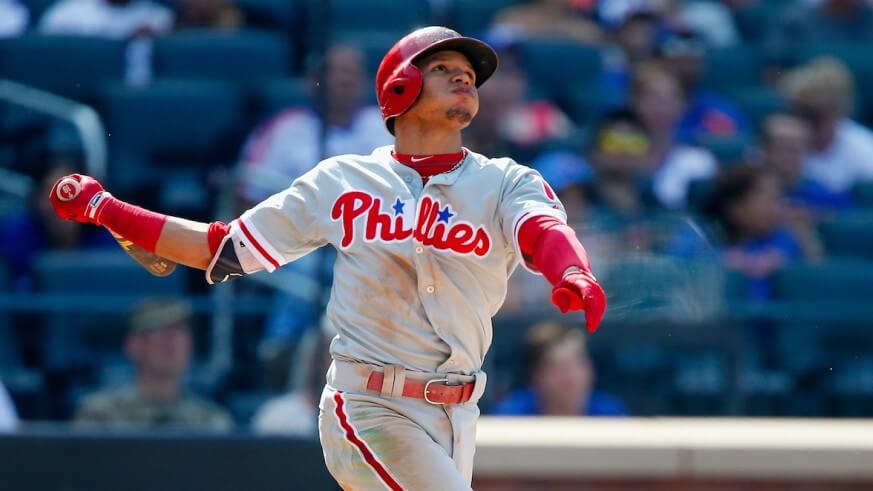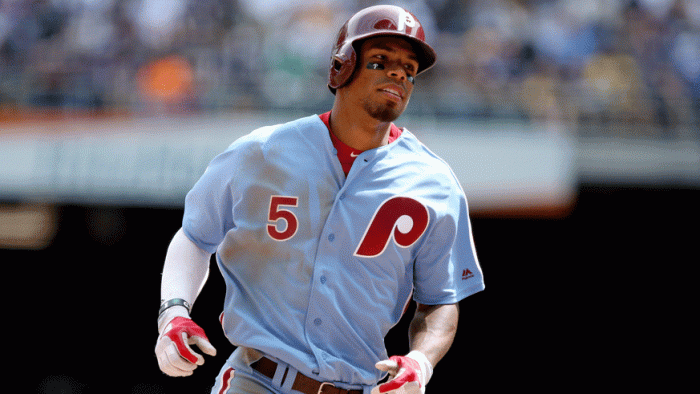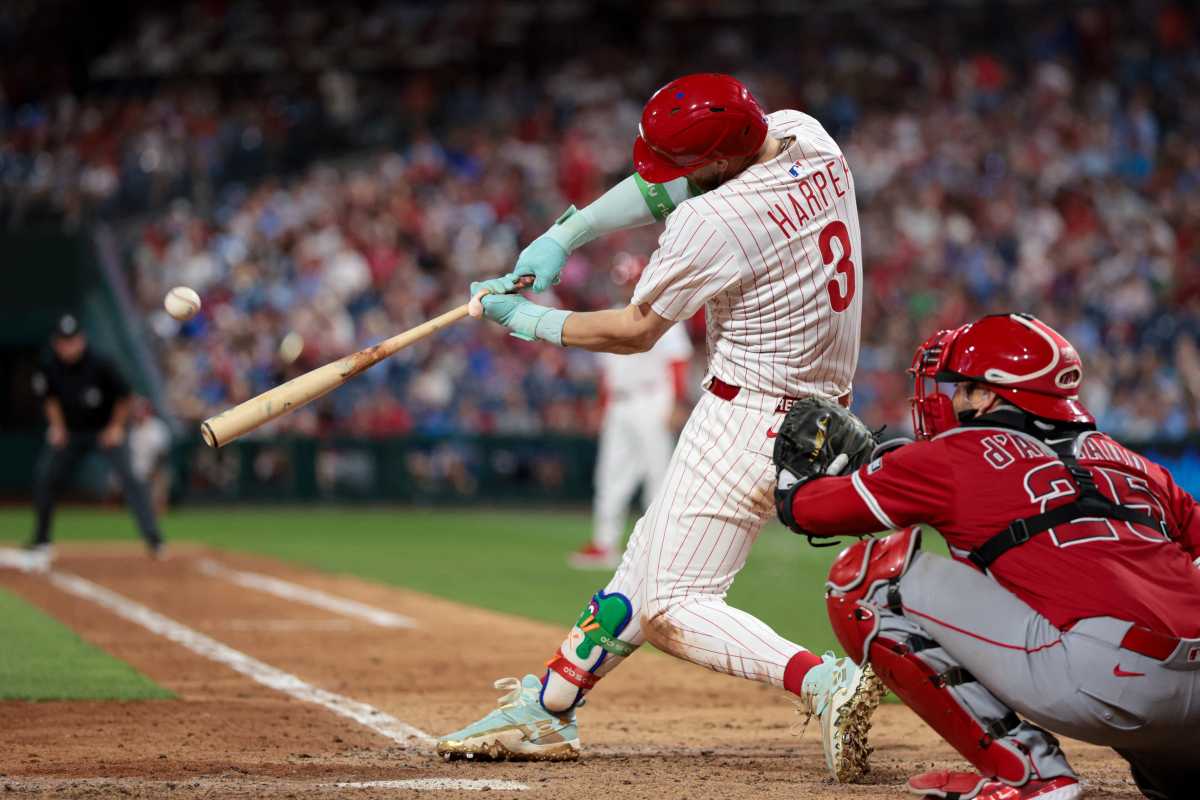When Washington ace Max Scherzer induced Phils catcher Jorge Alfaro to flail at three straight four-seam fastballs in the seventh inning Sunday, Major League history was made. Never in 137 years had a pitcher tallied 15 strikeouts in a start while posting 19 outs or fewer.
Now that may seem an arbitrary stat. Okay, it is. But it speaks volumes about the game in 2018 – particularly about the Phillies.
In the era of launch angles and exit velocity, Major League whiff rates are the highest they’ve ever been. Through Sunday’s games there were 8,204 base hits – and 8,554 strikeouts. Never in baseball’s history have the Ks exceeded the hits.
Part of that stems from today’s bullpens being stocked with hellacious relievers throwing 99 mph. But, more so, there’s a new offensive mind set, exemplified by the Phillies, that examines the new math and concludes, hey, a strikeout is nothing to be ashamed of.
“Strikeouts by themselves are not a terrible thing,” Phils GM Matt Klentak recently told the Inquirer, adding if they are balanced by a high walk rate and home runs, “It’s a perfectly good way to build an offense.”
What in the name of Ichiro Suzuki is going on here?
Following that mandate, every Phils hitter has abandoned the art of shortening up his stroke when facing two strikes. Instead, they take a few pitches, swing for the fences, and too often plod back to the dugout after strike three.
Nine separate Phils hitters are on pace for 100-plus punch outs – and it would be 10 if light-hitting SS J.P. Crawford hadn’t gotten injured. As a team, they are headed for 1,636 whiffs, which would obliterate the MLB record.
The urge to flail has infected everyone. Banjo hitter Cesar Hernandez is swinging like Ryan Howard – except without the homers. Hernandez is trending toward 162 Ks – one per game. Catchers Alfaro and Andrew Knapp are on a combined pace for 289 strikeouts. I can’t imagine that total has ever been topped by one position on a baseball team.
Am I the only one bothered by this?
The swing-from-the-heels mindset is bothersome in several ways. First, a diet of walk-strikeout-homer is boring baseball. Fewer balls in play means more dead time with fielders idling about chewing sunflower seeds. There’s no defense, no base stealing, nobody trying to stretch one into a triple. No action.
Second, Klentak’s plan to build his offense this way is flawed because it reduces the number of ways a team can score. If Phils hitters narrow-focus on drawing walks and swinging for homers, they’re unable to bunt, hit behind a runner or create any small-ball opportunities to help them survive against a monster like Scherzer.
And, of course, it creates longer games. The average Phils contest has lasted 3:11 this season.
I’m no enemy of analytics. I bought Bill James’s guidebooks back when they were mimeographed sheets. And I’ve been around long enough to know everything in sports is cyclical. So I’ll celebrate when this self-defeating, tedious offensive strategy moves on.
Meanwhile, I’ll hunker down, order up another beer and bag of peanuts and watch the parade of failure trudge back to the dugout. And hand me another pencil. I wore this one out writing the letter “K” too many times on my scoresheet.
Glen Macnow: Sound alarm – Phillies could break MLB record for Ks





























